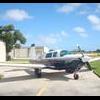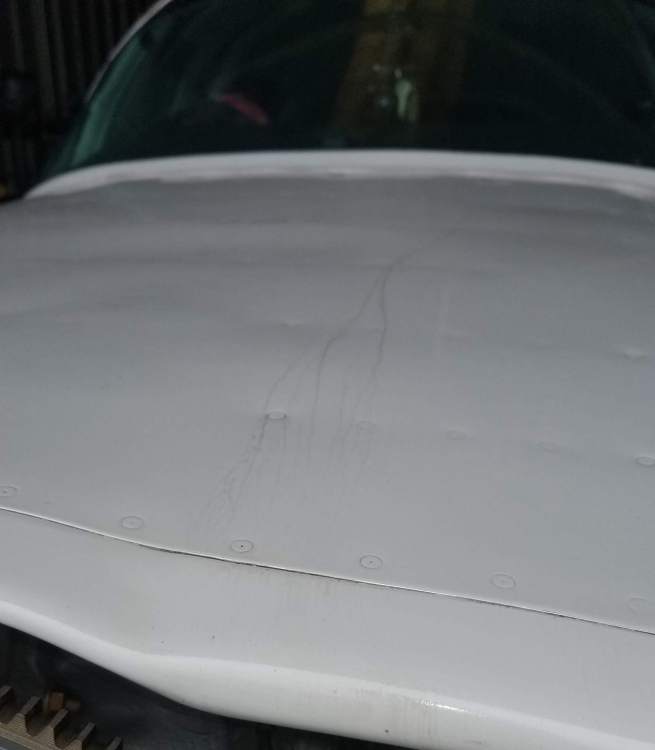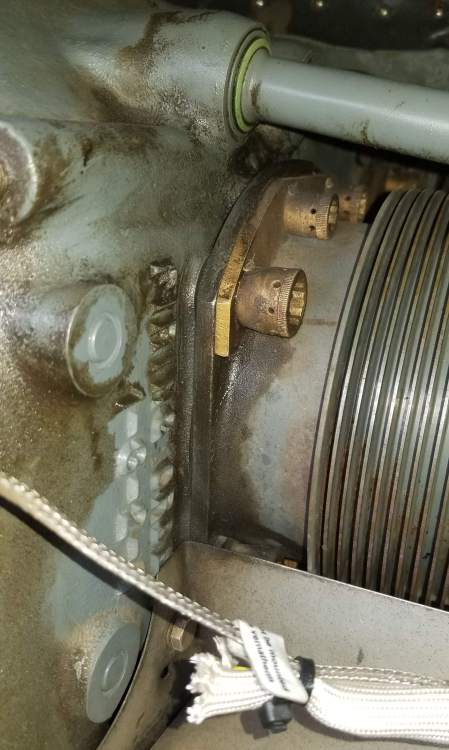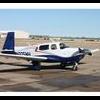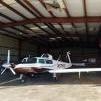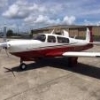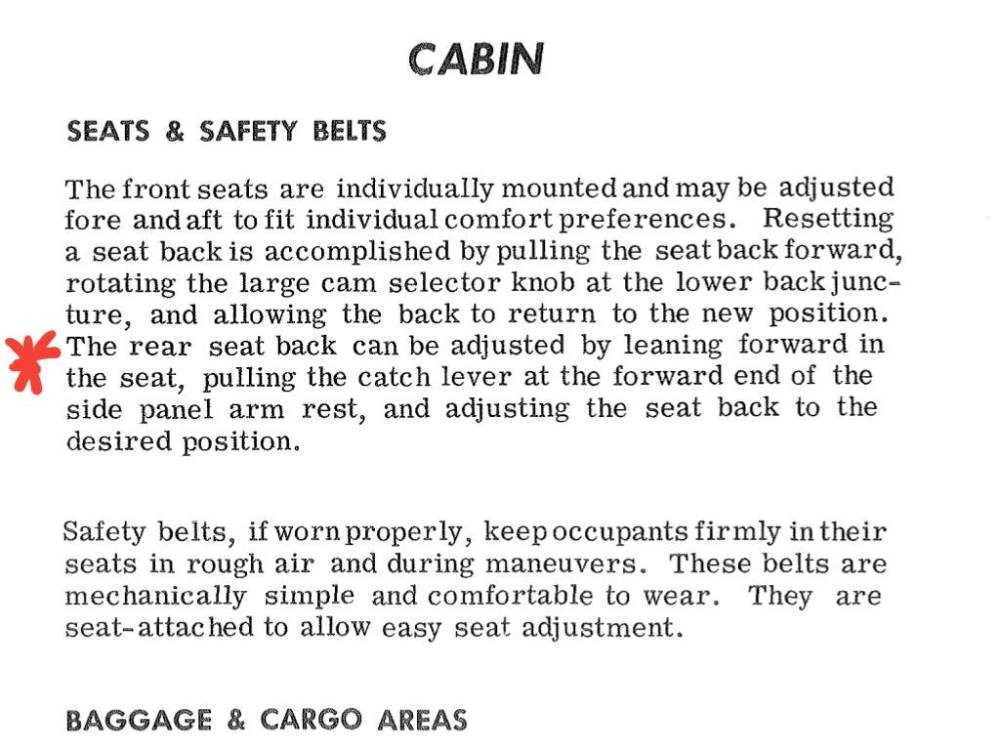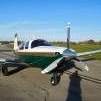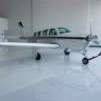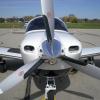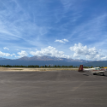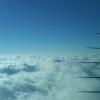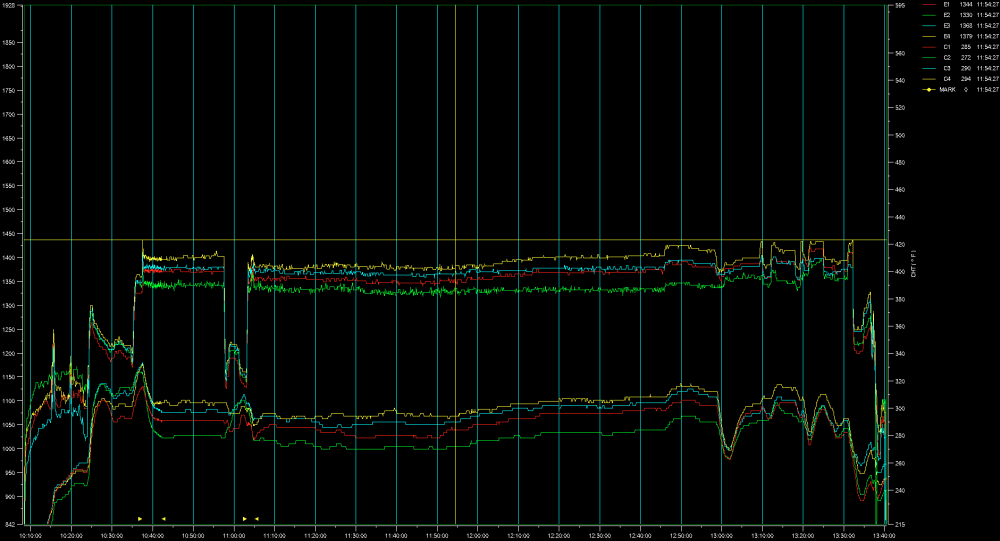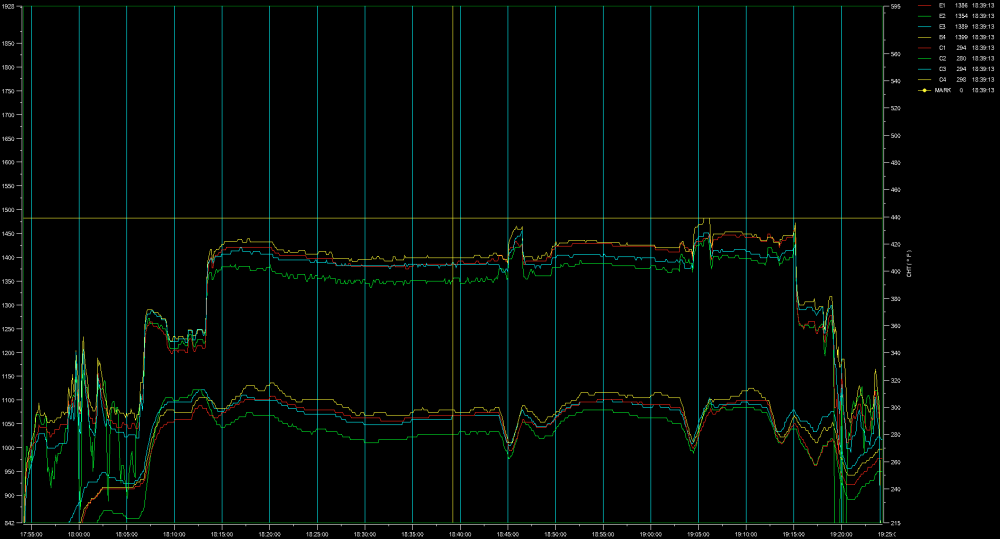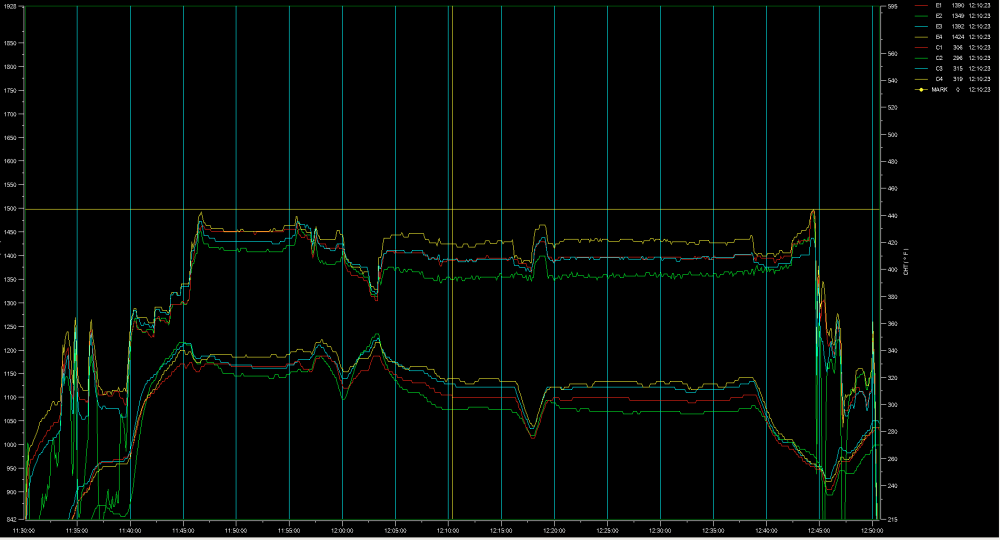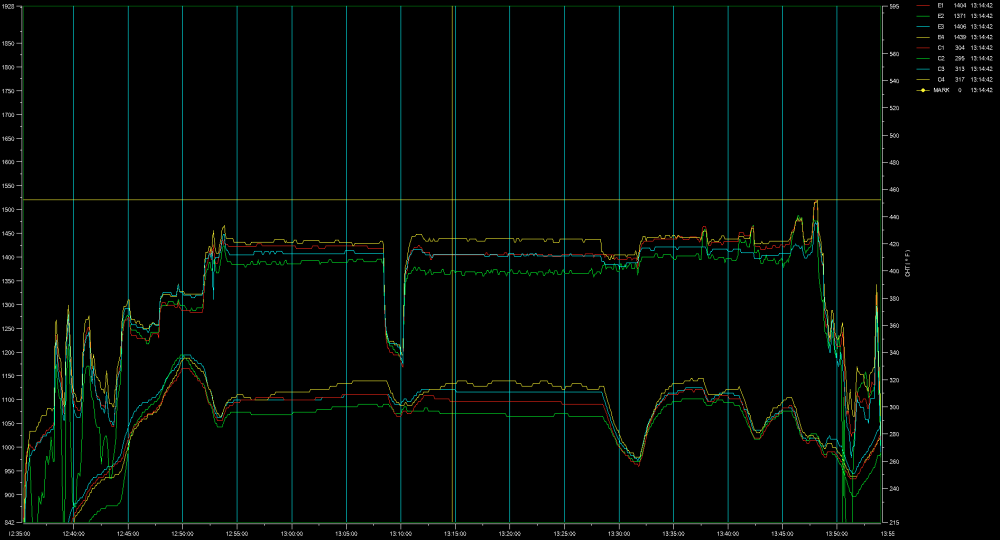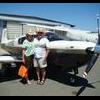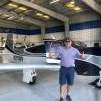Leaderboard
Popular Content
Showing content with the highest reputation on 05/03/2019 in all areas
-
Sure, Anthony. The plane flies faster in lower density air (less drag) and density is a function of both altitude and temperature. You are always better off higher if the engine will put out the power you need. The two common ways of achieving this are super/turbocharging and having a more powerful engine derrated at sea level which is how the turboprops operate. The poor J with its little 200 hp engine doesn't get very high before it starts to run out of power, but it makes up for it by being so efficient. That's why I like to cruise at 8000 -9000 feet ROP. I like to go fast and I figure I already pre-saved on gas by not buying a Cirrus Skip4 points
-
Flew to Vegas last Friday and back on Saturday. On the flight back I started to get a fine mist of oil on the windscreen. Kept an eye on the oil pressure, lost about 1/2 a quart over the 90 minute flight. Emailed some pics to my mechanic and he stopped by the hangar to take a look, put some dye in the oil, cleaned the engine up, and told me to take it around the pattern once. I did that Tuesday after work and he went by today to see if he could see where it was coming from. I was worried about the #2 cylinder that has shown some very slight oil seepage for quite some time. He said there was no dye/leaks showing at the #2 cylinder, but the quick drain was spitting oil out and it was getting blown around. I guess on that longer flight (higher speeds) there was enough blowing around that it was coming up out the front of the cowling and back onto the windscreen. Small trail of oil across the top of the cowling after that 90 minute flight. #2 that I was worried was the problem, apparently just a bunch of oil from the quick drain that was swirling and blowing around. After the trip around the pattern with the dye, here's the problem... He gave me the part number that Spruce uses and told me I could have it sent to him and he will put it in. I told him I could just have my wife pick it up today and I'll stop by the hangar tonight to drain the oil and leave the part so he can swap it out tomorrow. Have I mentioned before that I think I have the best wife in the world? She encouraged me to get my license, buy the plane, and she picks up parts! Funny thing, she walked into Aircraft Spruce and the guy behind the counter recognized her and said "Pick up for Mr. Brown?"3 points
-
All you have to do is put the audio panel on pilot isolate and it will FEEL faster...3 points
-
It would be interesting to go back through posts here on MS from when the ADS-B mandate became final. You would find lots of comments stating that the program will not work, it won't deliver on its promises, the cost will escalate to ten times its budget and that GA will die because the average owner won't be able to afford the $10k needed to get compliant.3 points
-
The F-35 pilot you spoke to is a friend of mine. While we do not have ADS-B out (or in), we have a very advanced sensor and radar system which allows us to keep track of air targets very well. Our routes to and from Luke, though, take us through some pretty busy areas with loads of VFR traffic. Not to mention all the folks transiting the MOA’s VFR. I’d say from my experience flying the F-35 here, that it’s not so much finding and tracking the VFR targets that’s a problem- it’s just that they tend not to see us and hence maneuver into us, sometimes at close ranges, which means we have to stay on our toes. Approach does a decent job of trying to call us out- but as you mention- it’s busy airspace- and we’re VFR typically during our recoveries to the field to expedite the recoveries and reduce the load on ATC (we stay ifr on the departure and try to get up high as quickly as possible- get out of everyone’s way and save fuel). and I echo my friends comments- this is by far the busiest airspace I’ve flown a fighter in and out of. To include when I was flying hornets out of Atsugi, Japan (edge of Tokyo) and Virginia Beach... Phoenix is the busiest. ADSB is great- but it’s a sensor and has its weaknesses too. Use your other sensors as well to find traffic (your eyes and ears) and combine all that information in your advanced mission computer (it sits on your shoulders), to stay safe out there.3 points
-
This past Tuesday I was flying a friend who is interested in learning to fly and I was conducting an unofficial first flying lesson. We were maneuvering in a pretty isolated space at the edge of the Bravo when I spotted incoming traffic on my IFLY 740 with ADSB in. He was about 4 miles with no altitude reported 143kts pretty much coming in from my 0900. I continued at my altitude and heading to keep him approaching me at 90 degrees and increased throttle to ensure he would pass behind me. I was at about 2500 and he was cruising along about 1500 and passed about a mile behind me. We will never know if he saw me or not. Without ADSB it probably would have not been an issue but ADSB allowed me to know he was there and look for him. I was not talking to ATC at the time and maybe if they were not too busy they could have called him out as well. I don't like the way ADSB out tattles on you but I do like the traffic and weather in. Keep your eyes peeled out there and use all the tools you have at your disposal.2 points
-
Should I tell my wife that we'll get there faster if she'll ride in the back seat?2 points
-
2 points
-
I am a very blessed man in that my wife is an A&P mechanic. Just like your wife though, she has no desire to fly the plane.2 points
-
I’m pretty sure the entire engine mount is a custom assembly- it’s not the stock one from either the 252 or the Cessna twin.2 points
-
My question would be "does she have sister?"...... Just kid'n, my wife loves flying and has never questioned anything spent on aviation, in fact she's just the opposite2 points
-
I agree with FlyBoy. When I worked for my previous employer I spent 300-370 hours in a Mooney between Annuals. Lots of flying. All hours of the day an night, during the day while monitoring Center Freqs you could hear the traffic on the radio. A lot of it being airliners that are way above you an pose no threat. But you could also hear the bug smashers(just like me) that did pose a potential threat, an in most cases you would hardly every see them. Now fast forward to that night headed back to the shop. Center freq would be in slow motion(sometimes checking in to make sure the controller isn’t sleeping). Even though the radio traffic would be at a minimum, you could still see strobes popping in all directions. So..... I’m a huge fan of the ADS-B for the Traffic Mostly2 points
-
I have excellent eyesight (as long as it's not closer than 18") and think I'm pretty good at spotting traffic, but on probably every flight there is someone that passes within 2-5 miles of me that I can't seem to find, despite my tablet telling me where to look.2 points
-
Like I always say.. that traffic has always been there, we just never knew.2 points
-
I’m willing that bet it’s sooner than OSH. Check out the rev 15 page using the link below. the J/K is listed and I’ve had my K back for about a month now from 500 development. To answer the original post, The STC is technically approved as you can see on the document. https://support.garmin.com/support/manuals/manuals.htm?partNo=GFC-500AP-00&language=en&country=US2 points
-
2 points
-
While I love ADSB and the situational awareness it brings, I've never worried as much as you guys about mid air collisions. They've always been rare as hens teeth, just a few a year. I worry more about weather, about which ADSB gives mea great deal of awareness.2 points
-
To the OP, I would say that there are still one or two things you could try to increase that. You could try leaning a smidge to get slightly more power at 1,000' MSL. Also, did you have your vents closed? That's a racing technique that helps reduce drag and may give you a knot or so. And are you sure your gear doors and flaps are rigged for maximum drag reduction? As to gaining altitude, Bryan's advice would work for a turbo but not for us NA guys. The performance charts clearly show that TAS will decrease even with full power as altitude increases. Byron's racing techniques included things (as I recall) that take you close to the edge of the certification envelope, like advancing the mag timing, etc. Probably not something you want to mess with unless you're really trying eke out those knots. But from what I recall of my J-model, the OP is doing pretty well compared to the absolute book values...which as we all know are just for marketing!2 points
-
The back seats in my 1970 C model recline individually (from the factory!), and are sort of easy to remove. They are, however, a stone cold b!tch to reinstall, which will make you sweat like a whore in church while simultaneously enlarging your vocabulary and diminishing the blood supply in your extremities. I'm not takin them thangs out again unless and until I completely redo the interior! Sorry, back to your regularly scheduled discussion . . . . Just had to stick up for my fellow Vintage owners, reclining back seats aren't exactly new.2 points
-
Just keep in mind that the most difficult traffic to spot is traffic on a collision course. If they aren't going to hit you they will be moving in the windscreen which is usually how you spot traffic. While the big sky theory usually works, it isn't perfect. Knowing there is traffic out there on a collision course can at least get us looking in the right direction or maybe even make us decide to alter course just a little. The Garmin green relative vector is especially nice for determining whether traffic will get very close or not. Try thinking of ADS-B IN as insurance. I didn't expect to die unexpectedly for ANY reason prior to retirement, but I had life insurance anyway. Same with homeowner's, collision, and medical insurance. It only takes once to ruin our plans. Do you have any of those types of insurance? I also like ADS-B IN for checking enroute and destination weather when I'm on a long flight. Obviously your choice though... as long as you don't want to enter ADS-B airspace after 1/1/20.1 point
-
This could be bad... A wild ride for the pilot trying to get back to the front after hugging the hat rack during a speed run. Bad time for a 256 failure.1 point
-
I have already replace the AI and the DG. Therefore, am I thought I had to keep the TC???? I will read through it again as well. Oops just saw Paul's comments after I posted @gsxrpilot Paul and I have the same understanding .1 point
-
Mrs. Steingar has on several occasions done hour long drives to drop off and retrieve the aircraft from maintenance.1 point
-
Also, inspect the field wire from the VR to the ALT. Look for frayed connections at either terminal or a partial break along the wire. This will limit the field current available which will limit the ALT's output.1 point
-
Mine has no desire to take the controls either, I'll let go of the yoke and she will get us wings level (left wing heavy) but after a few minutes she's had enough. In all fairness to my Mooney, the heavy wing seems to be related to seat I'm in1 point
-
Thanks for the Tips Anthony. I have been reading everything O2 for weeks now building up to this moment. But many years ago during my High School years I worked in a welding shop in the summers. The owner had witnessed the business end of O2+Oil in some of his early years in the trade. Said it was very unexpected an very vicious. Everyone was well educated in the Safety when working with it. So in his shop, tools that were used with any of the Compressed Cylinders were to stay in those areas to be used ONLY for those tasks. P.S. I was not a welder. Not even a welders Bitch. I swept the floors, Picked up around the shop, re-Stocked welding Rods, Ect.1 point
-
Joe is short on time... According to another thread... today’s project has been pushed to the weekend... Signs of a strong economy... Best regards, -a-1 point
-
1 point
-
Great graphs! Gents, Terminology: 1) Sticky valve... valves are designed to rotate during normal operation. This allows them to be nicely cooled in a uniform sort of way... when they stop rotating, they start misbehaving... a sticky valve doesn’t rotate uniformly... 2) Valve rotation allows for that nice pizza looking image... no rotation, an Odd non-pizza image is the result... to see the pizza image, a mechanic usually uses a dental camera sent in through a spark plug hole... 3) The JPI EGT graph picks up on the issue of a sticky valve and the line generally starts to look like a saw-toothed line instead of a nice smooth line... 4) Stuck valve... JPIs are great at some things... the stuck valve EGT drops to the bottom of the graph... because there is no compression. Compression is required to produce the proper flame... reminder... all that fuel is still going somewhere... and is probably burning in the exhaust system... 5) what we learned... a sticky valve is identifiable by looking at the EGT graphs... the valve guides can be cleaned using the ‘rope trick’. 6) A stuck valve usually happens in the last few minutes of a flight... because no matter where you were going... your plan has changed to land safely... you have at most 75% hp... and a few unknowns... as PIC, you will be deciding to land straight ahead... or determine the best plan to follow... 7) during my M20C stuck valve experience... while planning to land straight ahead... we quickly determined we were producing enough power to make shallow turns and land back on the next intersecting runway... without an engine monitor, we had no idea what the problem was... a bearing failure, or a single cylinder not operating...lots of vibration, no smoke or oil coming out that we could tell... Its a great experience worth discussing... For selected details like these, there are more at the Savvy website... inviting Paul @kortopates to join the conversation... (when / if able...) PP thoughts only, not a mechanic... Best regards, -a-1 point
-
1 point
-
at least you have the usb-c in the audio panel. Thats a nice feature with the PMA450 series.1 point
-
try putting pressure on the rudder petals and move the yaw slightly to one side and then the other while watching the airspeed. Give it time to react. Many times the plane is not perfectly rigged and you can get a knot or two from the reduced friction. This is also a good way to determine if your turn coordinator is aligned properly.1 point
-
He is only showing 3 amps. Sounds like VR issue. I had this problem and fixed it with a new VR. Tom1 point
-
1 point
-
"If it isn’t working on the ground, it probably won’t get any better in flight" Ah, but that's the rub. It works(ish; it reads lower than the EDM-830, but it does provide a reading) on the ground and in flight. And the EDM-830 never hiccups on the ground, no matter how you test it - but a few minutes into any flight, it starts complaining about bad probes and flashing red Xs at you. I've reached out to the FSDO, and I'm told there are "options," but I don't know yet what those are. Worst case I'll just replace the factory CHT probe, un-INOP the factory gauge, and see if that cures the issue with the JPI.1 point
-
I have an electrical wiring stripper/tool with an integral shear that will make short work of turning a 5/8" long #4 SS screw into a 1/4" long one, and fix the threads to boot after the cut is made.1 point
-
I had to replace the left caliper.Although I do not have co pilot brakes, here is my story. Bled brakes every way we know, AP and I did, bottom up, top down over and over again. He said I may be getting air into the system through the brake master cylinders and we should rebuild them I thought yes he is an AP and has worked on aircraft since Vietnam War where he was a mechanic but I couldn't see how air could get in if no fluid was getting out. He pointed out the fluid level in the reservoir would go up after bleeding and that's why we weren't losing any fluid. So we removed both master cylinders and replaced the o rings in them. Bled the brakes again from the bottom up and no more problems. He said the master cylinders can pull air in around the shafts when the pedal is released. Guess he was right.1 point
-
While it's true that NA engines loose HP with altitude, there is still a sweet spot where the ratio is optimal. My understanding is that that is somewhere around 8000 ft for the J? I've never been to FL280 to try for 252 mph in my K but I've seen 238 mph at FL260. *all figures in TAS1 point
-
If someone had offered one of the MS24693-C2 for $10 it would have been an easy fix. But what to do with the other 99 .. .lol?1 point
-
I have been looking back through my JPI logs to determine the first point at which I can see that C2 is not well. I would say it was this 3.5-hour flight on 23 NOV 2018. One thing I note is that "approach sickness" (sticky valve on approach) seems to occur many flight hours before "morning sickness" (sticky valve at startup) starts for this valve. If you click and zoom in, you can see one "approach sickness" dropout for the C2 EGT trace. Here's short flight for IFR approach practice on 04 JAN 2019. Notice the C4 EGT is unstable at startup but tends to drop out on approach cooldown: By 14 FEB 2019, we start to see "morning sickness": Here's 20 MAR 2019: 06 APR 2019 I looked at some of these over the winter and I really thought the "dropouts" at approach and later at startup indicated a loose thermocouple connection. But if I view them in the context of the noisy trace for C2 EGT at cruise and later the rough starts, it should have been obvious what was happening. I just noticed the cycling of C2 CHT. That's important, I'm sure. And I should mention that up until mid-April 2019, I had the EDM-700 configured for its default sample rate (about 1 sample every 6 seconds). About 3 weeks ago, I switched it to its highest rate (3 samples/second if I recall) and that has helped me see the sawtooth pattern of C2 EGT at cruise. I knew something was up and was about to do some real analysis but it turns out I was already out of time. How much warning did I really have if I'd been paying attention? It was about 40 hours between that first flight with noisy C2 EGT on 23 NOV 2018 and the final event that bent the rod. It was about 20 hours between the time the JPI logs show first morning sickness and the bent rod. As Mike Busch says, “Anyone who experiences an in-flight exhaust valve failure today just wasn’t paying attention.” This is 100% correct in my case. Cliff1 point
-
Hey Hank....just breathe deep down in bamahama...no body is insulting Marauders lovey ladies...it’s all in the eye of the beholder!!and I admit my eyes aren’t too good!!1 point
-
Some thought it was because after my playing days, I ballooned up to close to 300 pounds from my playing weight of 235. And this was a way for me to justify being a fat guy. "I wasn't a fatty, these are fatties!". Others believe I am one of those guys who possess the recessive gene that triggers admiration of large rotund ladies. While others, believed it was a tactic used by me to defuse some of the uglier threads this site produced. What's worse? Reading about Little Timmy or being bombarded with pictures of large rotund ladies pictures? You pick...1 point
-
Those settings are config setting related: A good partial flight test would give you 100% good but only XX minutes in rule airspace. From: http://www.vansairforce.com/community/archive/index.php?t-113529.html GNS/GPS 4XXW/5XXW (e.g. GPS 400W, GNS 430W, GNS 530W)Main software version 5.03 or later and GPS software version 5.0 or laterGTN 6XX/7XX (e.g. GTN 650 and GTN 750)Main software version 3.00 or later and GPS software version 5.0 or laterGNS 480Main software version 2.4 and GPS software version 5.1Aviation Service Document (http://garmin.blogs.com/files/1519a_asdn.pdf)GTX 23ES and GTX330ES TranspondersMain software version 7.00 or later (V7.04 released in 2014)The RS-232 serial output port on the GNS or GTN unit providing position data to the transponder should be set to "ADS-B+" or "ADS-B+ Format 1" when available.The RS-232 serial input port on a GTX330ES transponder configured to receive ADS-B+ position data from a GNS/GTN unit should be set to "REMOTE". I went and found the GTX330ES installation manual: (ignore the name it is the GTX 3XX manual). http://www.aeroelectric.com/Installation_Data/Garmin/GTX 3X5 Install Manual REV 5.pdf page 6-37 for the GNS 4XX (ADSB-Out+) page 6-68 for the GTX330ES (Remote) In order for the Transponder to relay the additional accuracy and integrity required by AC 20-165A Version 2 compliant equipment, the GPS unit's RS-232 serial output must be configured to the extended ADS-B format. This is indicated via selections with a “+” in the selections title (i.e., “ADS-B OUT+,” “GTX Mode S+,” “Panel GTX w TIS+”). #1... make sure that the actual ports that are connected on the GNS and the GTX330ES are the same ones configured as specified. If anything, turn off the TIS, TAS, etc... just get the ADSB out working.. it should be a dead simple config.. 1 rs232 out to 1 rs232 in.. (diagram on page B-5) #2 make sure that all other ports that you aren't using are set to off. my GTX345 behaved oddly because one of the HSDB ports was left "on" rather than off1 point
-
1 point
-
Unfortunately we can't. In fact, this is the whole purpose of the Caravan. The only way to ensure parking/camping with your friends, is to land with your friends. The only way to beat the FISK chaos and land with your friends is to arrive in close formation. Therefore... the Mooney Caravan formation flight to Oshkosh. It truly is the easiest, low stress way to get to Oshkosh.1 point
-
Key words are Mooney Caravan. put it in the search box... They have their own specific website with all kinds of important info specific to formation. While searching look for some of the most recent videos... Some really impressive pics and video. Best regards, -a-1 point
-
I was thinking of me, too, as I've been reading this thread. Everything that was going through Omars mind went through mine, too. It took awhile, (almost 4 months for me) to get back in the air, as Lycoming had to build the replacement engine, but everyone associated with the issue couldn't have handled it better including the insurance company (not mine). I was able to get almost everything I asked for, (loss of use, new prop, new reman (I had to pay for part of that) and other things, including everything new firewall forward). The plane looks and performs like new now. Yours will, too, and with Mooney doing all the repairs, you are in good hands.1 point
-
The way this works is a) ameliorate damage and stop bleeding b) coordinate repairs - yes will be done at MOONEY so I get new engine and new everything. I have a new plane and I want back a new plane not a torn down engine c) go after FBO for DIRECT and INDIRECT losses (e.g loss of use etc...) - my carrier does that for me Hope this is helpful Sent from my iPhone using Tapatalk1 point
-
Folks, hi there, been busy and frustrated and sick to my stomach. No pilot error. The FBO made a mistake towing it and ruined the gear, as I was taxiing it collapsed, end of story. Mooney is ferrying it and I’m having a new engine and parts put in so I get my plane back as I had it, as new, I’m fine, shaken and distraught, but fine. Thanks to those who share their concern. It was KTMB not KOTF. FAA stated not pilot error, so that’s that, also, it’s an AWESOME machine and I’m proud of her, thanks, Sent from my iPad using Tapatalk1 point
-
Ok, let me jump in here :-) I happen to have both an Aspen PFD and a G5 in my panel. Granted, I have the Aspen PFD Pro which is the full IFR version. I also have the EA100 that allows it to talk to my KFC150 autopilot. The G5 is there to look pretty and help me get down if the Aspen takes a day off. But with about 400 hours of flight time, looking at them side by side, there's no question for me, the Aspen is just a lot more instrument than the G5. Even if you compare two G5's to a single Aspen, I still like the Aspen more. A few of the things I like about the Aspen: Displaying multiple nav sources on the HSI simultaneously. I don't need a VOR head or CDI for my second Nav. I can display GPS course and TWO VOR needles all on the single HSI display. Frankly it makes using the second NAV even easier and keeps the panel clutter to a minimum, and saves the cost of the CDI. True Airspeed - It's probably not all that important, but it's nice to see TAS along with GS and IAS all at the same time and all the time. Wind speed and direction - again, just a nice to have, but I've used it many times to make altitude decisions while in route, for better wind. It's also a nice check when on final for the runway. Route depiction on the HSI - it's super nice to see a hold displayed right on the HSI. Again, only for IFR flight, but just making things easier. A separate Minimums bug on the AI. Not only can you set an altitude bug on the tape, but set the Minimums for an approach that shows up as a color changing wedge on the AI. Again, making IFR flight just that much easier. Distance/Time/Course to the next waypoint - often on the GPS, but nice to have on the Aspen right in my line of vision. The Aspen is also just so upgradeable. Start with the E5 now, then next year upgrade to the Pro, then after that think about upgrading to the AOA or SV down the road. And it will drive your STEC autopilot today and anything else you put in tomorrow. Frankly I'd keep your Stec until you are ready to upgrade to the Stec3100. I find that I only use the G5 as a second altitude or heading bug. Of course it doesn't drive my autopilot, but it just doesn't have the features of the Aspen, so I just don't use it. And that's my $0.021 point


